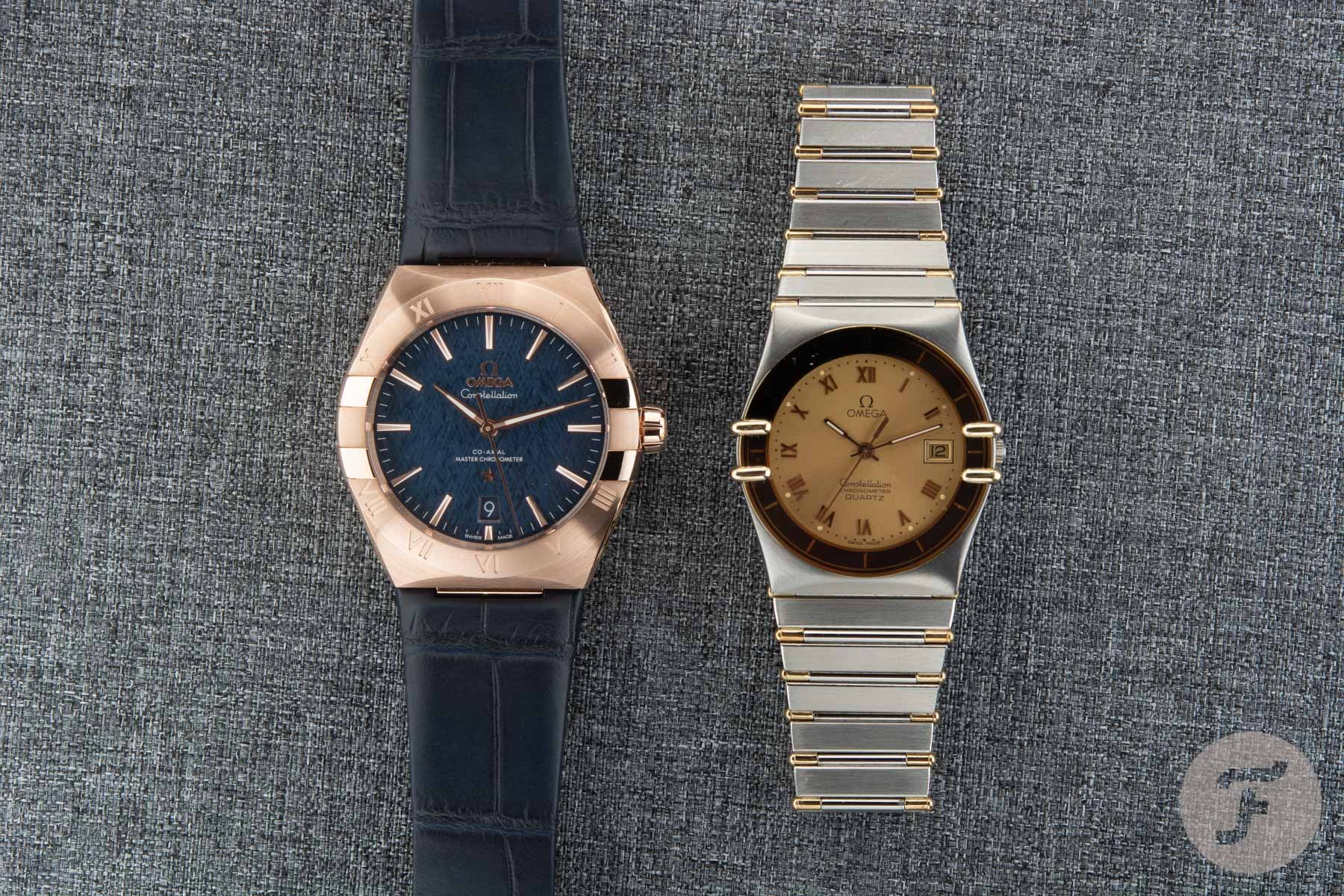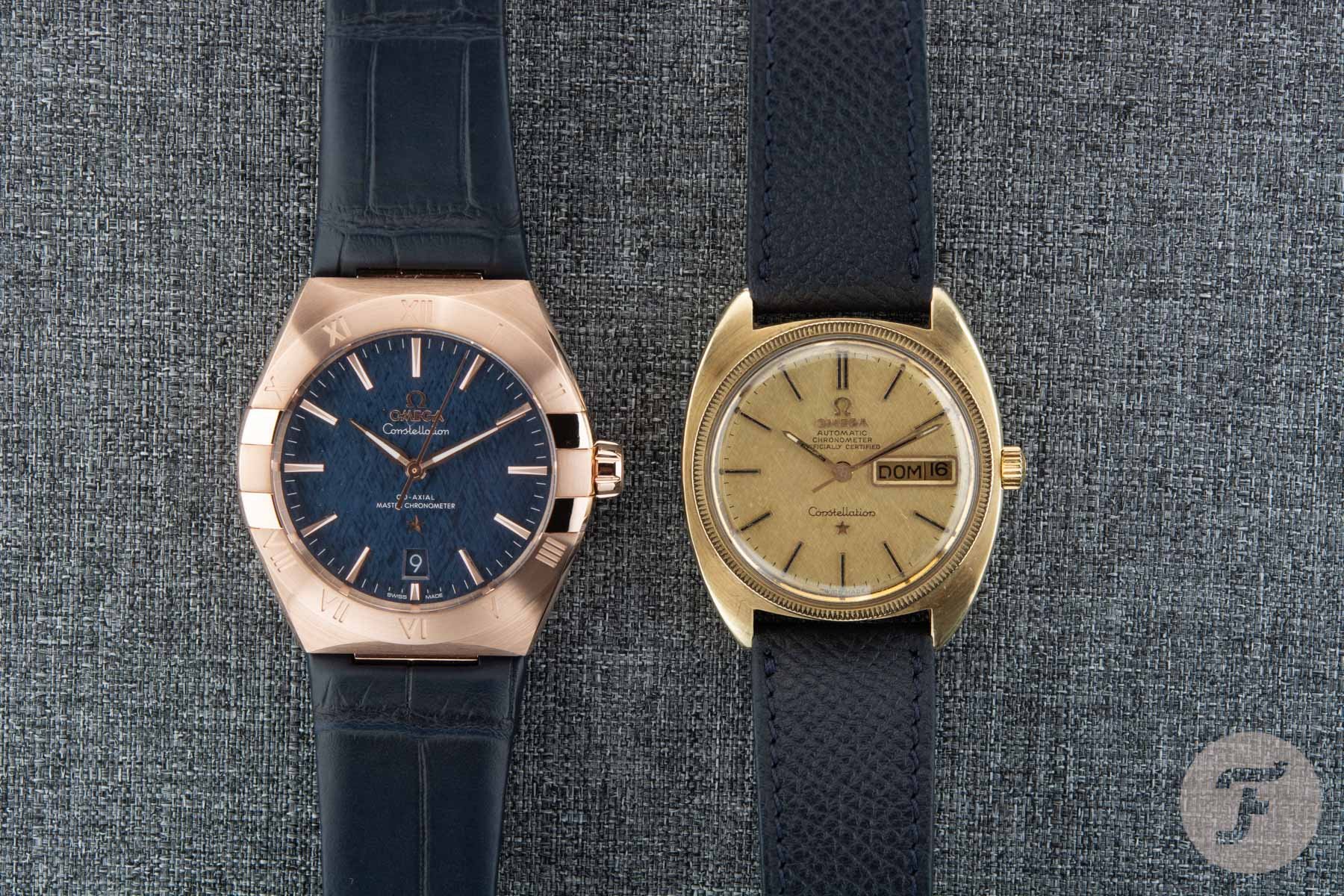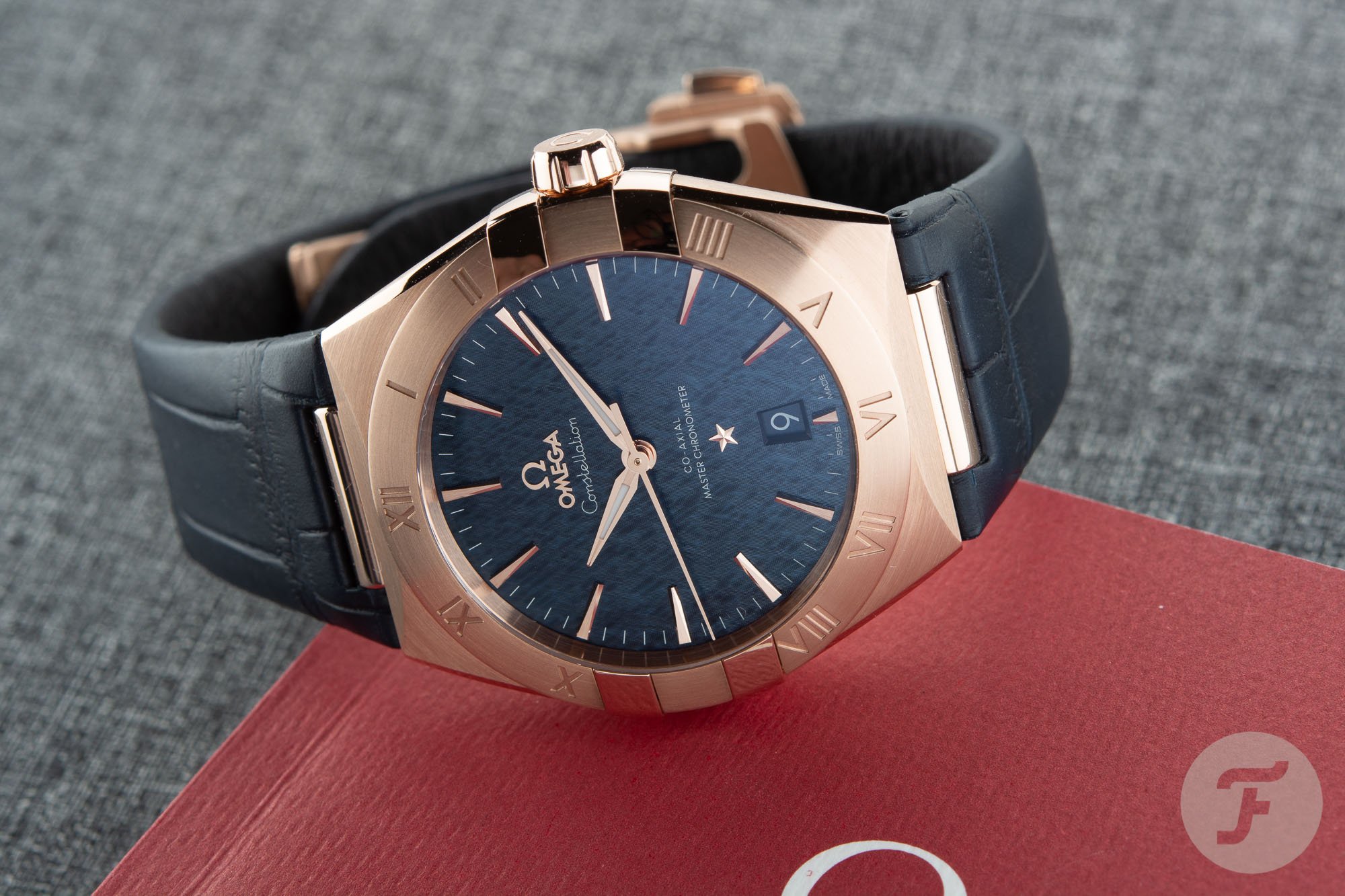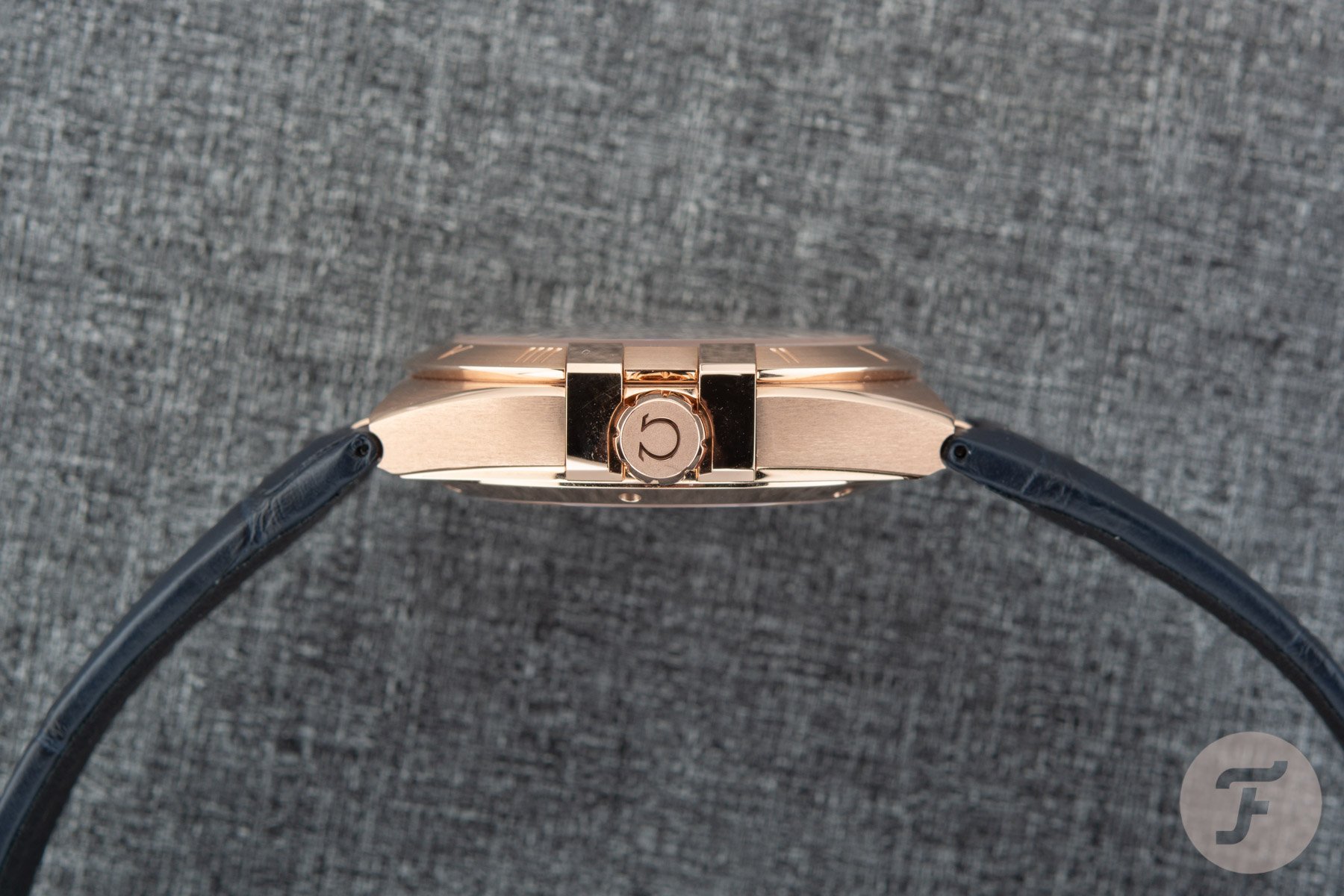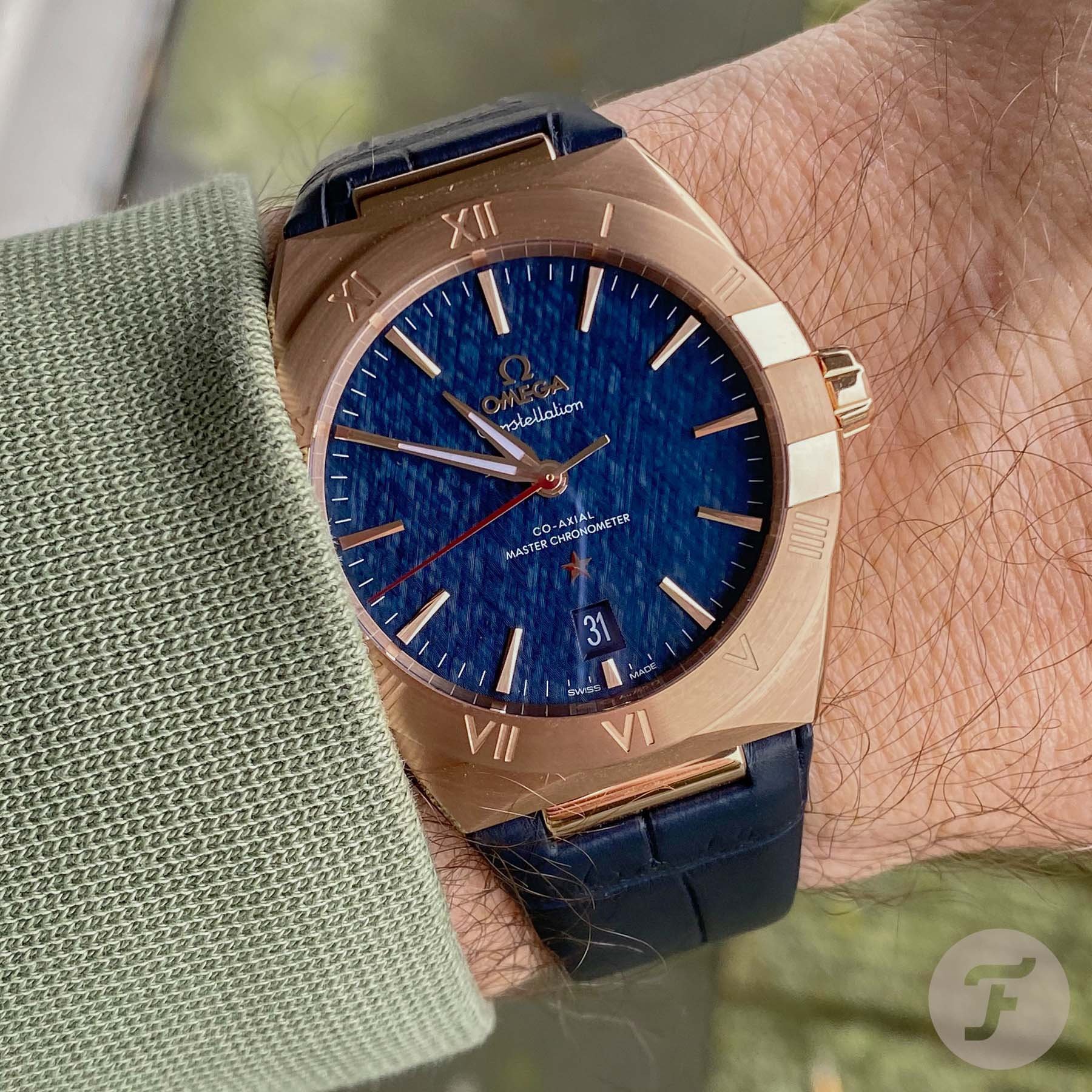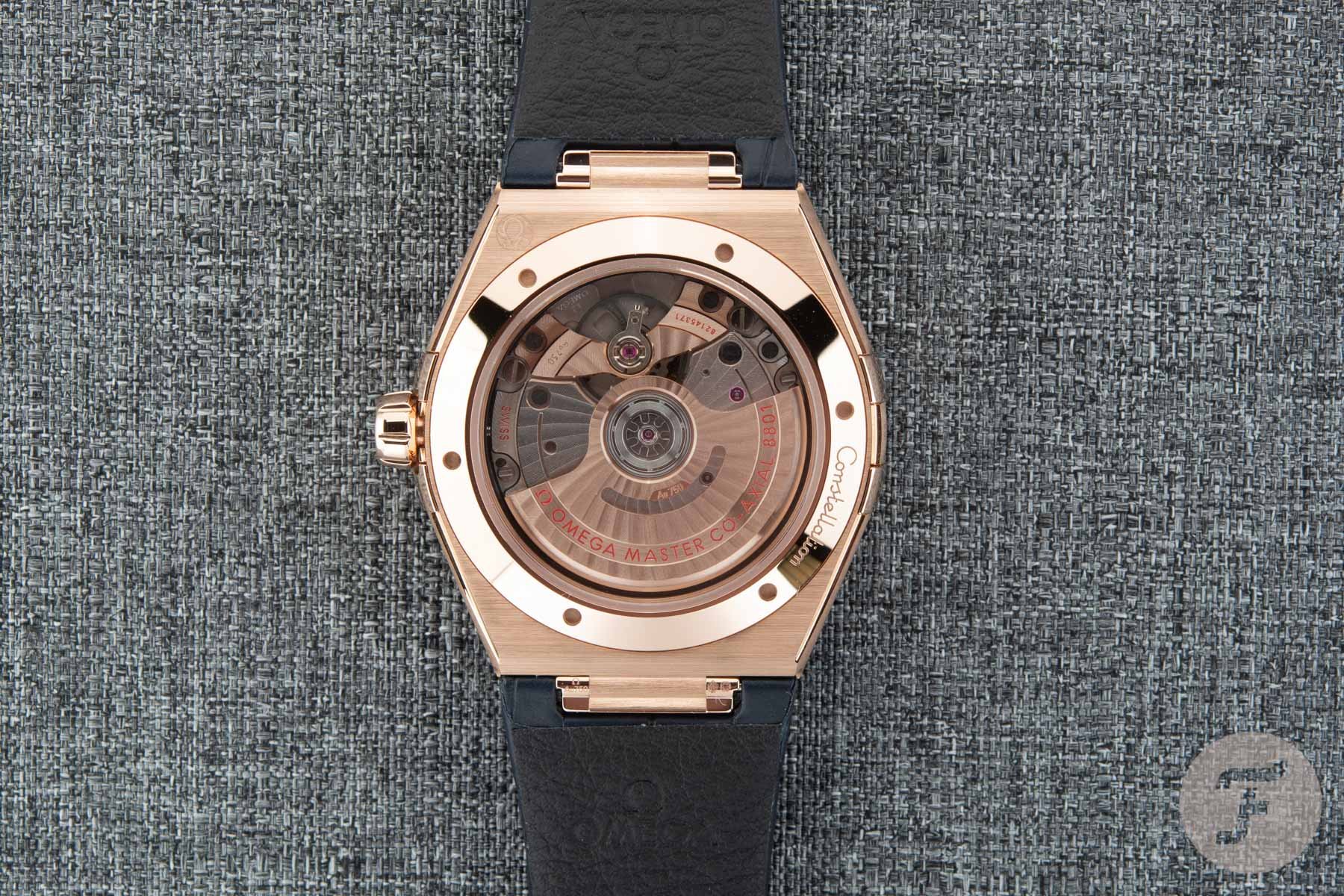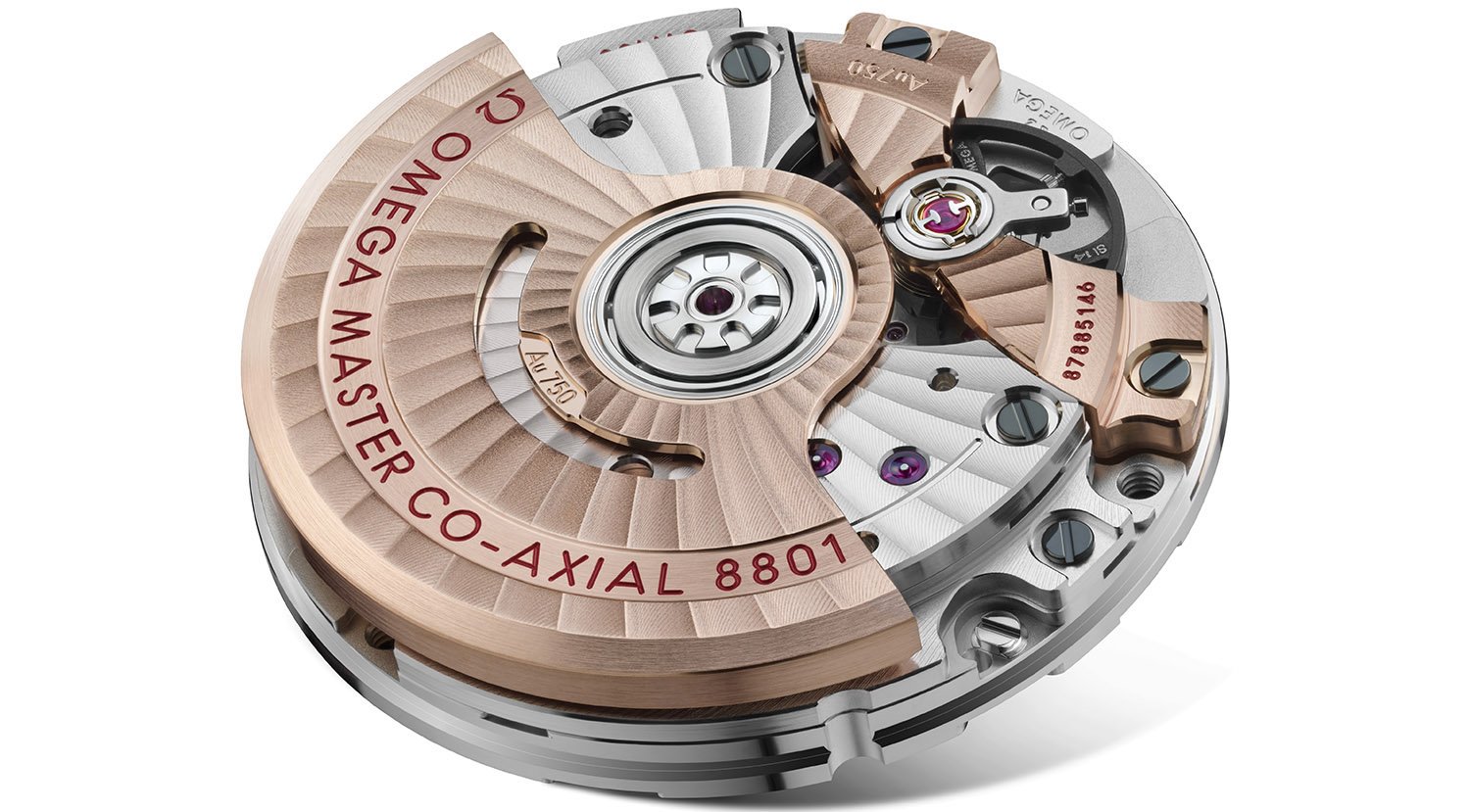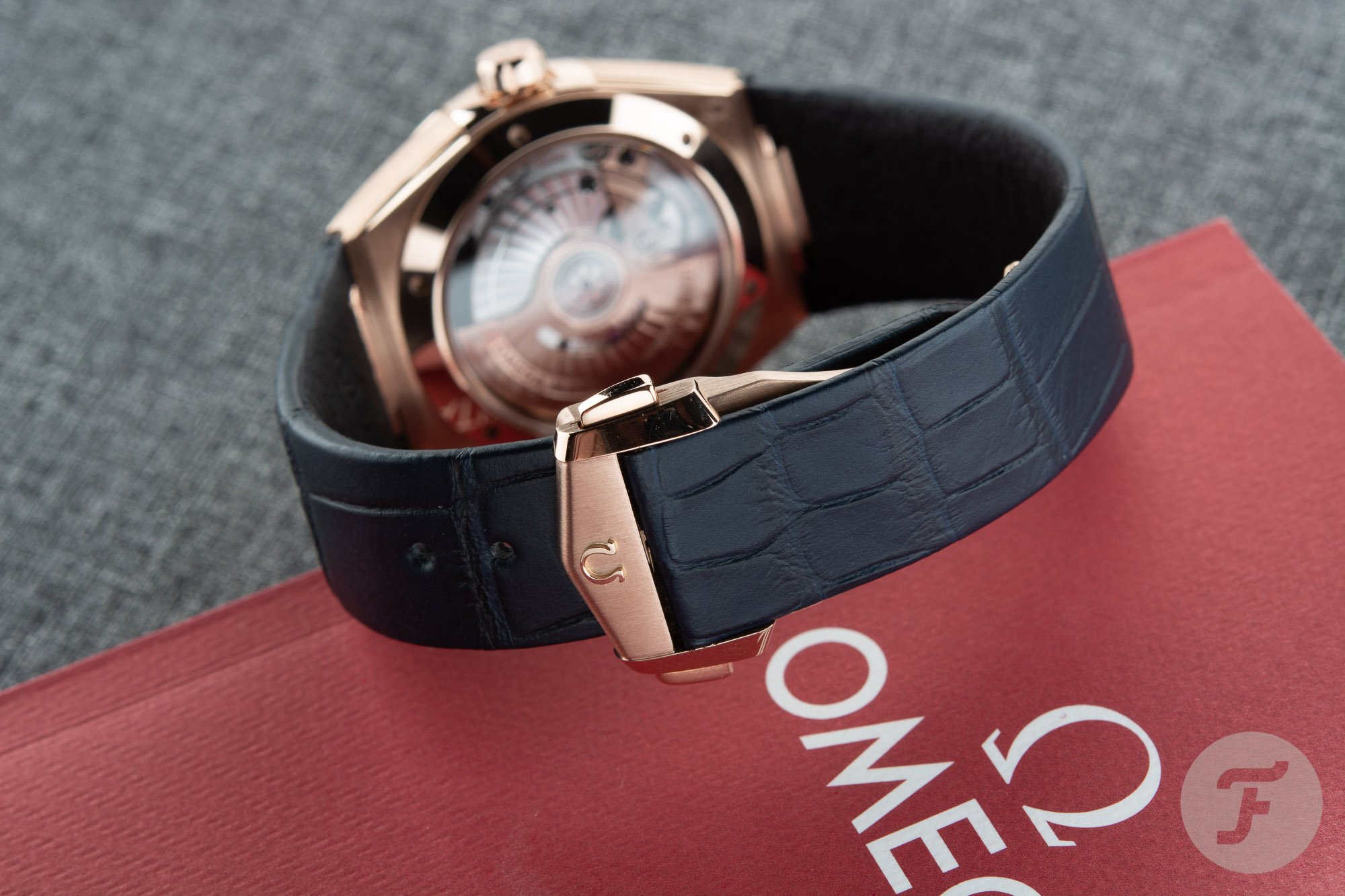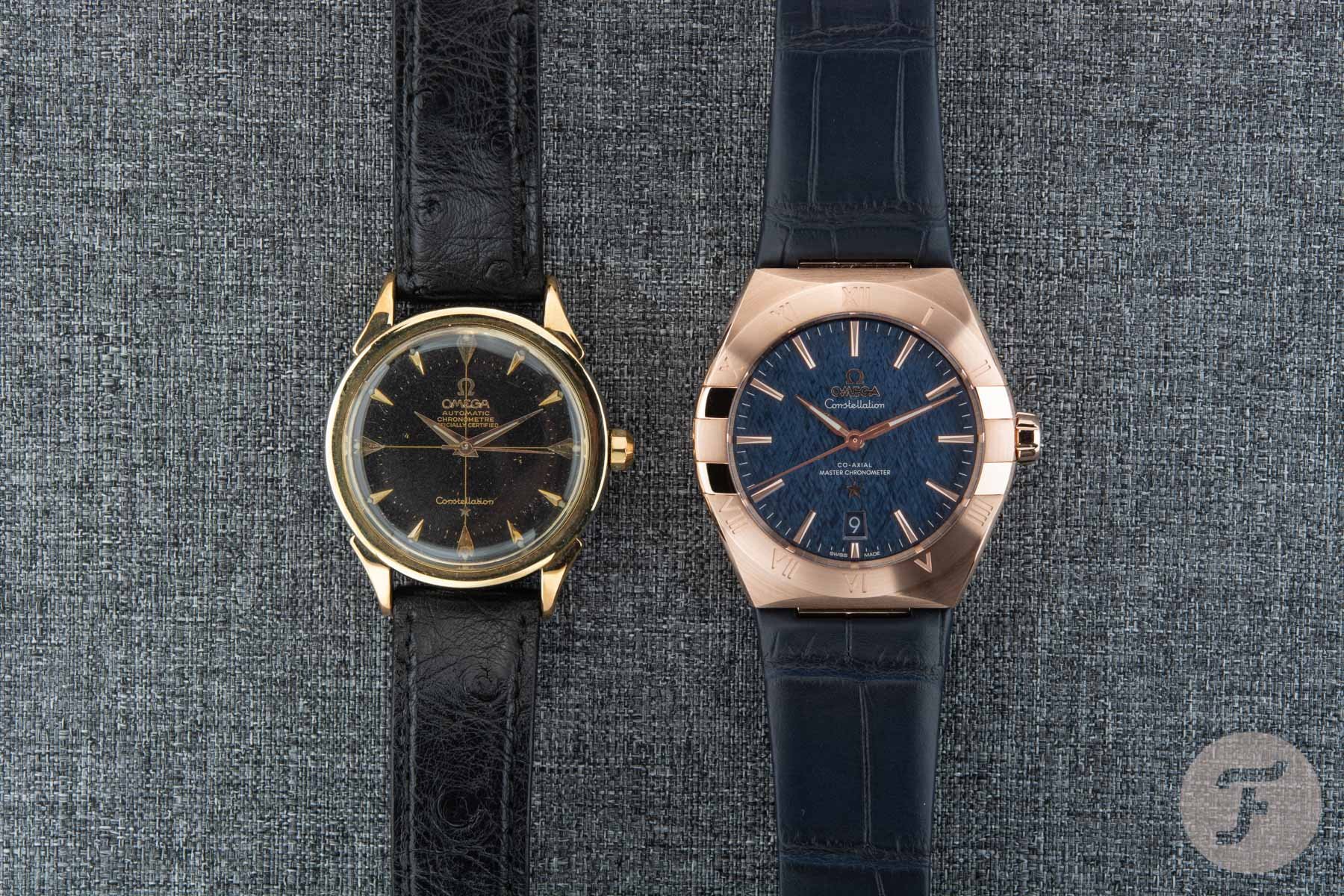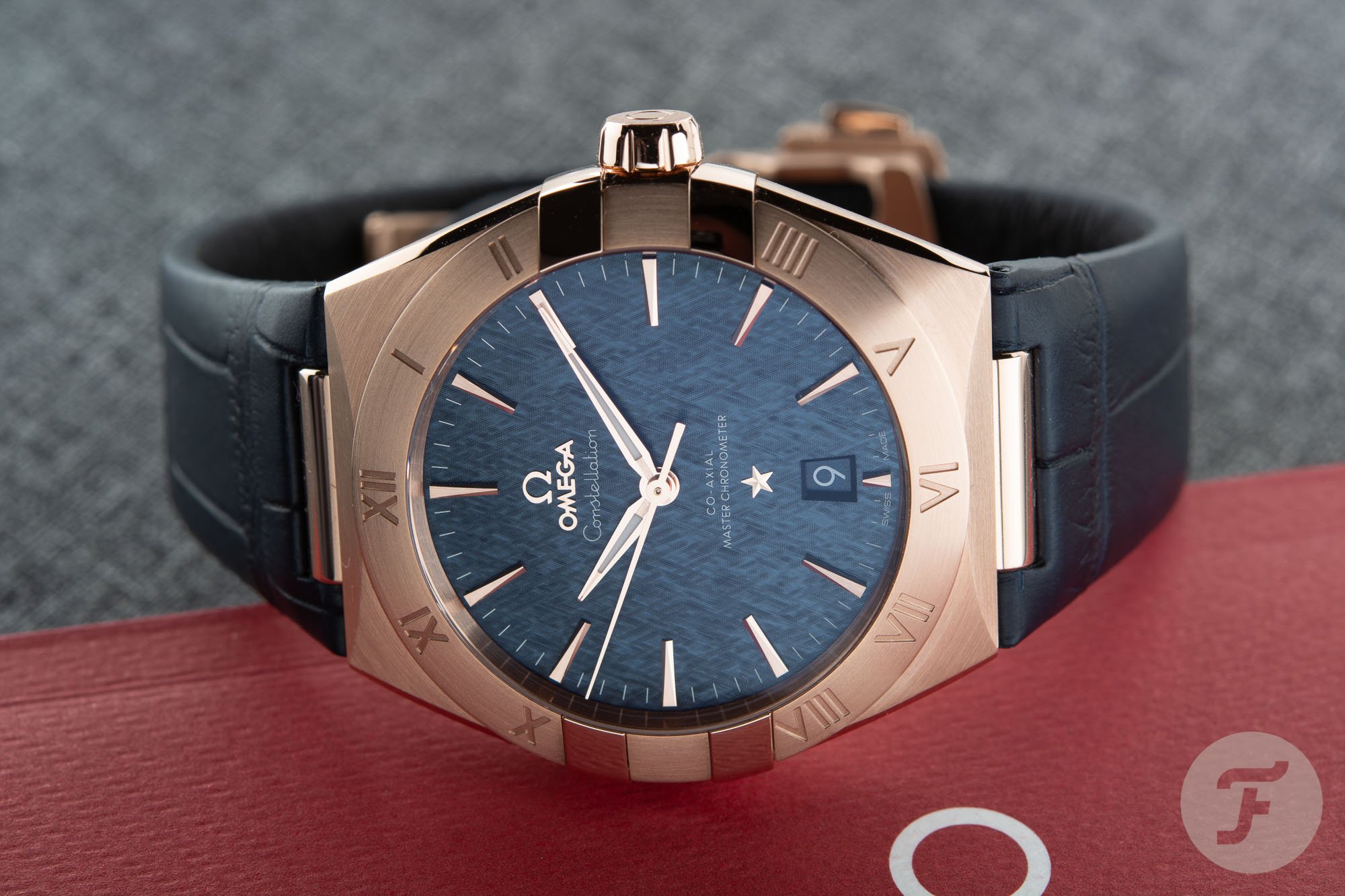Hands-On With The Omega Constellation 39mm In Sedna Gold
Earlier this year, I reported about the new Omega Constellation 39mm Gent’s collection. The lines of this model are a bit sharper than the previous model, and they are now all equipped with the in-house caliber 8800/8801 movements. My only concern, as I wrote in this article, is the thickness of the case. Let’s see if that has been addressed by Omega.
I never really took notice of the Constellation “Double Eagle” collection from 2003 and the later 2009 Constellation collection (38mm). They were much bulkier than the Constellation watches that were made from 1982 to 2002 and somehow I simply didn’t warm up for them.
The new Constellation 39mm Gents’ collection looks more mature, compared to its predecessors.
When Omega introduced its Constellation “Manhattan” series for ladies in 2018 (Karina reported about those here), I was excited to see what the updated version for men would be like. And when the moment was there, I was happy about the design updates. The more masculine lines were a big improvement, in my opinion. Sharp edges on the case and bracelet, polished facets on the brushed bracelet, and better-designed applied hour markers. The new Constellation 39mm Gents’ collection looks more mature, compared to its predecessors. The diversity of dials also makes it interesting. The silk ones are especially cool and remind of those C-shaped Constellations from the late 1960s and early 1970s.
But, the proof of the pudding is in the eating, and the thickness of the case was still a slight concern for me. I requested the Constellation 39mm for a review, and Omega was happy to supply us one for a hands-on test drive.
Constellation 39mm in Sedna Gold
Omega did not just send me any Constellation 39mm, but one in 18-karat Sedna gold. This is Omega’s own rose gold alloy and it, of course, has a softer tone to it than yellow gold. This particular Omega Constellation reference 131.53.39.20.03.001 comes on an alligator strap with 18-karat Sedna gold folding clasp. Having the Constellation 39mm on the wrist, immediately makes me think of two other Constellations that I have in my private collection. The very first Omega Constellation “Manhattan” from 1982 (reference 398.0864), as pictured above, and my Constellation 168.029 from 1970.
The first because of the typical shape of the case, with its half-moons and the claws on the bezel. While the claws had the function of pressing on the crystal on the first generation, it later became merely a design feature as the bezel wasn’t covered anymore by the sapphire crystal. And it makes me think of my C-shaped Constellation (see above), because of the silk dial. This dial is not only available in the Sedna gold models, but also for the stainless steel and bicolor variations.
But, that’s where the comparison ends, to be honest. The Omega Constellation 39mm has little to do with these vintage models. It is a modern watch, both from a production perspective as well as from a design perspective. It features the latest generation of Omega’s in-house movements. And that, above all else, explains the increased case thickness.
Case
The very first Omega Constellation Manhattan measured just 6.5mm in thick. Since then, they’ve only become thicker. The Constellation is not really considered a dress watch, so it doesn’t need to be ultra-thin, but it also shouldn’t have the thickness of a sports watch.
The 39mm Constellation I have here measured 12.5mm in height.
Well, the good news is, that Omega worked on the thickness of the watch. At least optically, it looks less thick than its predecessor. When I took my Omega Constellation Globemaster — also 39mm in diameter — out of the bank safe, I measured a thickness of that case and it is 13mm. The 39mm Constellation I have here measured 12.5mm in height.
So, it’s flatter than my Globemaster, but not by much. On the wrist, my concerns melted away. I wear my Globemaster a lot, and the thickness never bothered me. The same applies to the Constellation 39mm. During the time I had it on my wrist, I didn’t have an issue with it.
Caliber 8801 Movement
The caliber 8800 family is an upgrade of the caliber 8500, which was introduced back in 2007 (time flies). Developed in-house, this new series it possible for Omega to say goodbye to the caliber 2500 movements. Caliber 8800 (and 8801 for the gold watches, like the Constellation we have here) is Master Chronometer certified. That means that the movement is chronometer-certified, is anti-magnetic up to 15,000 gauss, is accurate with an average daily deviation between +0 and +5 seconds per day, and also performs perfectly with a low power reserve. An overview of all the Master Chronometer tests can be found here. It is good to know that all these tests have been performed with the movement cased up, unlike the COSC chronometer certification that only applies to the movement itself.
Great performance
The caliber 8800/8801 is a bit thinner than my caliber 8901 in my Globemaster, and there are some more differences. The power reserve of caliber 8801 is 55 hours as opposed to the 60 hours of the 8901. It also lacks the GMT function or, better said, the independent hour setting. I hardly use the independent hour setting on my Globemaster and would prefer the quick-set date that the 8800/8801 has. From my own experience, I can underline the great performance of Omega’s in-house movements.
…after 3 years of owning the Globemaster it is safe for me to say that the Master Chronometer movement outperforms all other watches I have or have ever had.
In the two weeks of temporary ownership, I can’t really comment on the 8801 in this Constellation, but after 3 years of owning the Globemaster, it is safe for me to say that the Master Chronometer movement outperforms all other watches I have or have ever had. Last but not least, I really enjoy looking at the 8801 movement, so a sapphire case back is definitely valued.
Strap and folding clasp
The Omega Constellation 39mm is also available in full gold, meaning that it comes with a full gold bracelet (for €31,600), but this one has the blue alligator strap with a comfortable 18-karat Sedna gold folding clasp. It is very easy to adjust, without the need for any tools and safeguarded with a pusher system. The alligator strap is of amazing quality, nicely finished on the edges and with a rather soft lining. It doesn’t need time to break in, unlike many other straps we get to try. It all depends a bit on your own skin and perspiration, but these straps will last quite a long time in my experience. That said, be prepared to shell out a good +- €325 when you need a replacement.
Some Thoughts
I am a fan of the Constellation collection and always have been, whether it is the first 1952 model, the 1960s pie-pan, or the 1982 Manhattan. My first Omega watch also happened to be a Constellation. Since then, I have gathered a small collection of them over the years. I stopped with the Constellation’95 models, as the 2003 Constellation Double Eagle that appeared as a successor to them was not for me.
For me, a Constellation needs to have at least a touch of gold.
I always wanted a worthy successor of the Manhattan, which I truly like and which Jorg has described so well a few weeks ago in this article on Fratello. This 39mm version of the new Constellation (also available in 36mm!) is definitely a better nod to the Manhattan than its two predecessors from 2003 and 2009. For me, a Constellation needs to have at least a touch of gold. Whether it is bicolor, or full gold, even on a strap, I think gold makes the Constellation DNA “pop” somehow.
Steel (starting at €5,500) makes it perhaps a bit more versatile, but the Omega Constellation to me is a watch that doesn’t need to be. That said, there’s one reference in steel that has a silk dial and has gold hour markers and hands (at €5,700) that proves my point — it pops. I hope that with the new series of Constellations, with their sharper edges, brushed surfaces, cool dials, and superb in-house Master Chronometer movements, we will see more of them in the flesh.
More information on this Omega Constellation 39mm reference 131.53.39.20.03.001 can be found in the table below. If you want to find out more about the Constellation or want to see all available models, visit the official Omega website.

